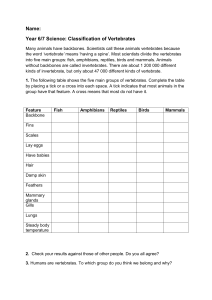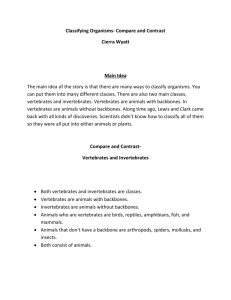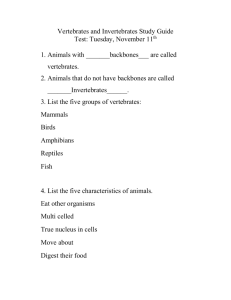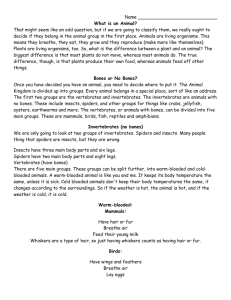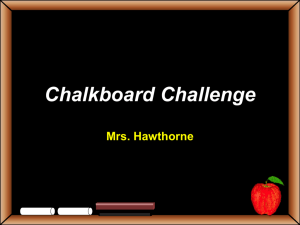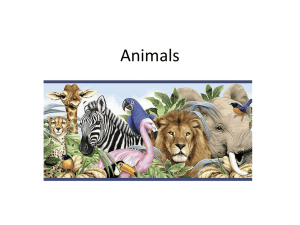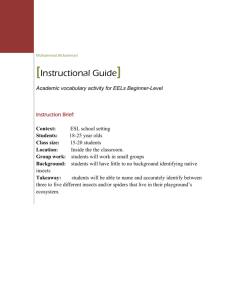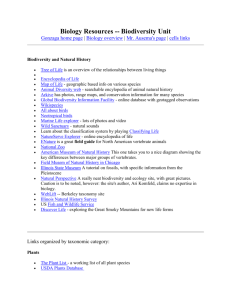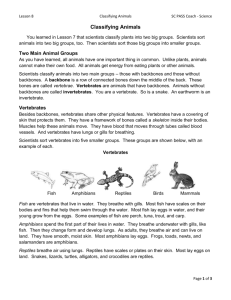5-Minute Prep
advertisement
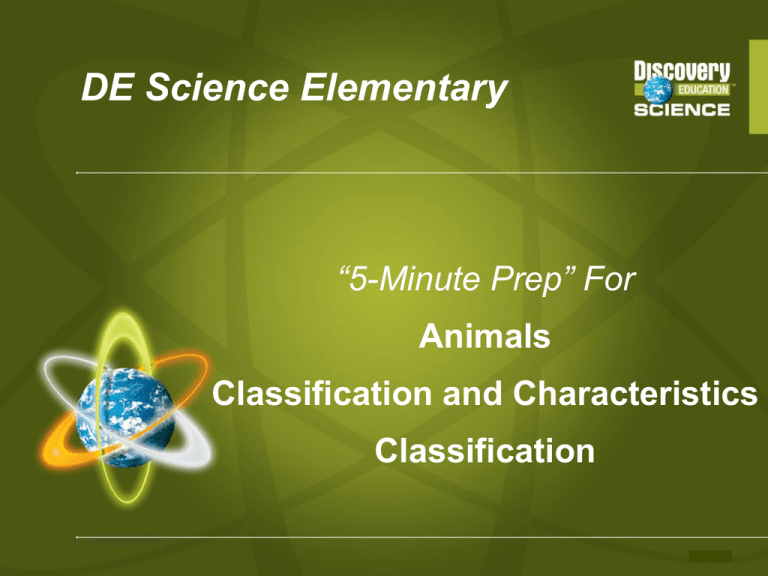
DE Science Elementary “5-Minute Prep” For Animals Classification and Characteristics Classification Classification – The Big Ideas • • • • Animals are classified into two major groups: vertebrates and invertebrates. Mammals, reptiles, birds, amphibians, and fishes are vertebrates with internal skeletons. Insects, spiders, crustaceans, mollusks, and other invertebrates have exoskeletons. Animals are classified by kingdom, phylum/division, class, order, family, genus, and species. Classification – Prior Knowledge Classification of Animals is a basic concept. No specific prior knowledge is needed. It will be helpful for students to use the Fun-damental to review animals. It will also help if they have: • Seen different kinds of animals. • Seen pictures or living mammals, reptiles, amphibians, birds, and fishes. • Seen pictures or living insects, spiders, crustaceans, centipedes, mollusks, worms, and jellyfish. Classification – Common Misconceptions • Whales and dolphins are fish. Reality: They are mammals with lungs instead of gills and hair instead of scales. They give birth instead of laying eggs. • Bats are classified in the category of animals called birds. Reality: Bats are actually the only flying mammal. • Spiders are insects. Reality: Spiders are not insects. Among their differences, spiders have 8 legs while insects have 3 pairs of legs. Classification – Using DE Science Content When you close this presentation, you can review the following recommended resources for Classification. • • • • Reading Passage: Animals With Backbones Reading Passage: Animals Without Backbones e-Book: Classifying Animals Video: The Difference Between Vertebrates and Invertebrates Use the PowerPoint version of this presentation for hyperlinks to these resources or you can get to them through the browser or search feature. Classification – Instructional Ideas • Read the passages, Animals With Backbones and Animals Without Backbones. – Create a wall chart with the labels, Vertebrates and Invertebrates. – Give each student a picture of an animal and ask them to place the picture under the correct heading. – Leave this chart on the wall as a reference for the remainder of the study of Classification. • Read the eBook, Classifying Animals. – Stop on the first page and lead a class discussion about how the students’ grouped the animals. – Then, finish reading the eBook. – At the end, compare the students’ groupings with the groupings in the eBook. State standards: If you wish to review your state standards regarding Classification, click here to get to the curriculum standards search feature of DES. http://discoveryeducation.com/forward/curriculum.cfm You can click on any standard to see what resources are available to teach it. Additional Information: For additional content, check the Extend section within the concept.


